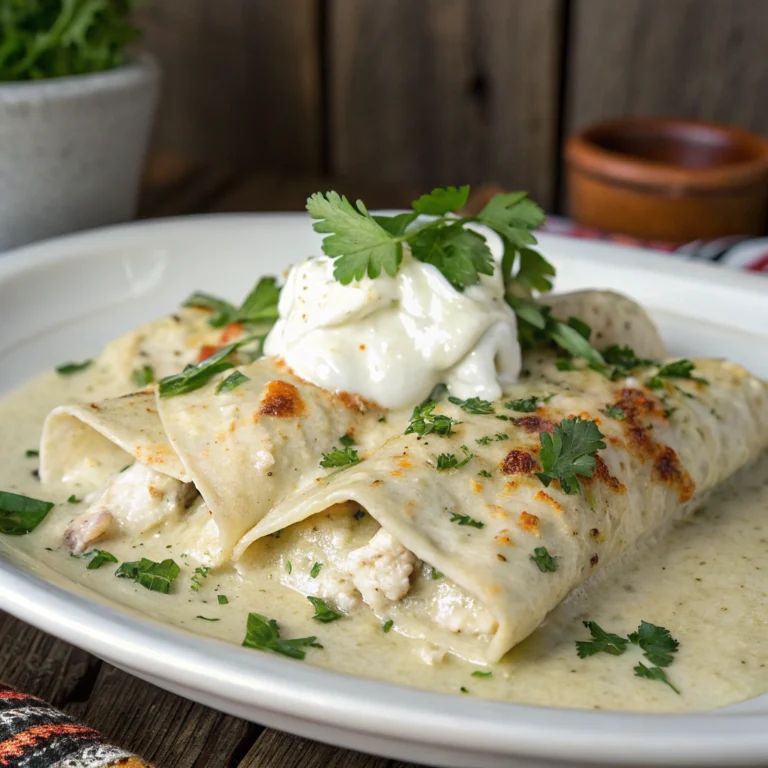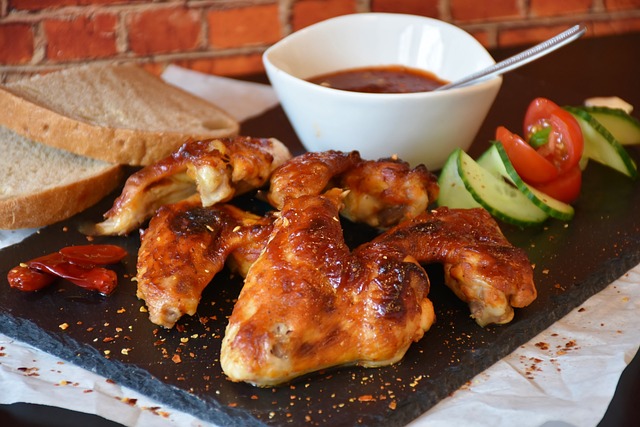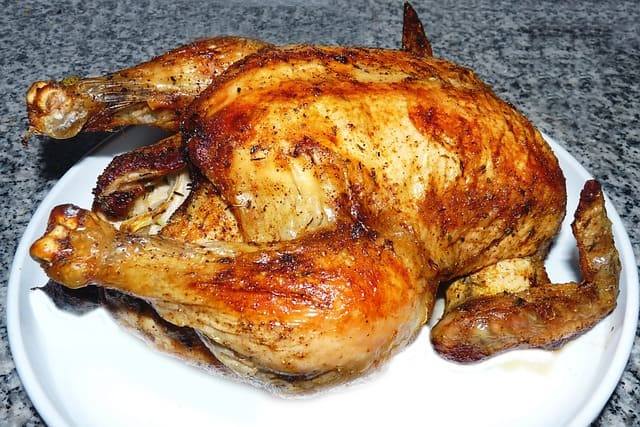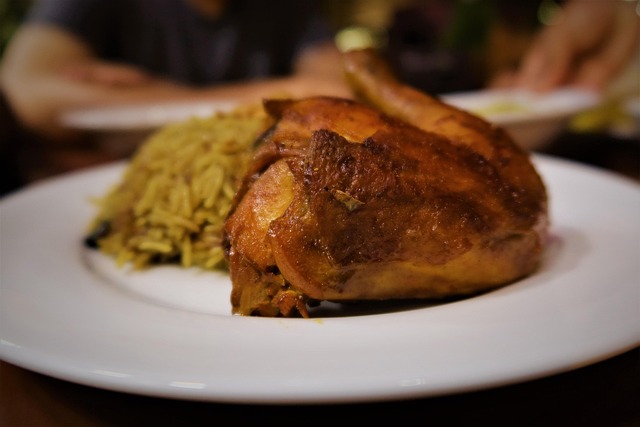Bone In Skin On Chicken Breast – Ultimate Guide to Juicy, Crispy, Flavorful Cooking
- Key Takeaways
- The underrated champion
- Preparing the chicken
- Mastering the cooking methods
- Essential tools
- Perfect flavor pairings
- Beyond the breastbone
- Conclusion
- Frequently Asked Questions
- What is a bone-in, skin-on chicken breast?
- How do I prepare a bone-in, skin-on chicken breast?
- What are the best cooking methods for this cut?
- What essential tools do I need for cooking?
- What flavors pair well with chicken breast?
- Can I use this cut in recipes that call for boneless chicken?
- How can I store leftover cooked chicken?
Key Takeaways
- Bone in skin on chicken breasts are incredibly flavorful and can be used in a variety of recipes and cooking techniques including roasting and grilling.
- The skin gets all deliciously crisp and the marrow in the bones pours flavor into the meat, so it’s great to marinate it for extra good times.
- Cooking with the bone in retains moisture, for juicy chicken breasts, and a meat thermometer can get you to the perfect doneness without sacrificing safety.
- This chicken is forgiving with cooking times, too, so it’s easier to get tender results even when you overcook a little.
- There is NOTHING wrong with choosing a nice chicken and properly brining/seasoning it to really make it taste good and lock in moisture.
- By playing around with cooking methods and flavor combinations (think herbs, spices and sauces) you’ll be bringing your chickens to a whole new level.
Bone in skin on chicken breast is recognized for its bold flavor and succulently soft meat. This cut is the perfect candidate for roasting, grilling or slow cooking. Cooking with the bone and skin on makes all the difference in moisture for a decadent meal.
In case you’re cooking for the family or for a special occasion, knowing the advantages of this chicken cut can take your kitchen game to the next level.
The underrated champion

Bone-in skin-on chicken breasts – the underrated champion. Their distinctive taste, moisture content and forgiving cooking profile made them the perfect candidate.
Flavor
Bone in skin on chicken breasts – they are delicious. The skin crisps up beautifully, giving you that perfect textural contrast against the tender meat underneath.
This crispiness is obtained by cooking the chicken over a high temperature so that the skin can render fat and become golden-brown crusted. The bone marrow adds even more flavor to the dish.
This natural basting gives every mouthful more flavor and satisfaction than boneless substitutes. A marinade before cooking can make these flavors really sing where different herbs and spices can imbed themselves into the meat.
Teaming them with buddies such as garlic, lemon or fresh herbs can take the dish to another level, resulting in a memorable taste sensation.
Moisture
No matter what, bone in chicken breasts stay moist. By cooking with the bone, the meat doesn’t get dry — juicy and succulent chicken.
The skin is important, as an armor that allows the tenderness to be preserved. To ensure optimal juiciness, consider these cooking techniques:
Poke small holes in the skin’s fat deposits to facilitate fat rendering.
Roast the chicken to distribute heat evenly throughout the oven.
Sear on the stove top for a great crust but moist insides.
Trust me on this one: use a meat thermometer, it keeps you safe and keeps the chicken juicy but not dried out.
Forgiveness
Bone-in skin-on chicken is forgiving to cook. It’s less likely to dry out, so you can be a little off with the cooking time and still have a great result.
Even if you somehow manage to overcook it, the fat cooks in and keeps the meat deliciously juicy. This cut accepts a variety of cooking methods, including roast, grill or sear.
Playing around with various methods allows you to find what you like, making every preparation an adventure.
Preparing the chicken

Thing is, you need to prep those bone-in, skin-on breasts the right way. Selecting good chicken and using good techniques can really make the difference in the kitchen!
Selection
Look for chicken breasts that have the least amount of blemishes and a generous amount of fat. Fat adds flavor and moisture, which is very important in juicy meat. Freshness is everything – make sure it’s properly packaged, and that the skin is bright and not bruised.
Different chicken breeds affect flavor and mouth-feel. Case in point: heritage breeds tend to be more flavorful than your average bird. Ask your butcher what the best cuts are — don’t be afraid to inquire! They can give you an idea of what selections are going to be the most satisfying for your plate.
Brining
If you’re working with chicken breasts, brining is a tried and true way to infuse flavor and keep the meat moist. Trust me, a simple brine can go a long way. Here’s an effective recipe:
Combine: Mix 1 liter of water, 60 grams of salt, and 30 grams of sugar in a bowl until dissolved.
Submerge: Place the chicken breasts in the brine, ensuring they are fully submerged.
Refrigerate: Let them soak in the brine for 1 to 2 hours.
This lets the chicken take up flavor rather than just soak in salt. Don’t be afraid to try different brine ingredients. Herbs like rosemary or spices like chili flakes can add unique flavor notes.
Seasoning
Don’t be stingy with the seasoning– it’s where the flavor lives. A dry rub or marinade will produce a mouth-watering crust on the chicken. Season with salt, pepper, garlic powder, paprika and dried thyme.
If you have time, let the seasoned chicken rest for at least 30 minutes prior to grilling to let the flavors permeate the meat. Don’t hesitate to experiment with different seasoning blends to find your own favorites. This experimentation will often result in truly original dishes.
Cooking
To cook the chicken, season it lightly with salt and roast it in a 218 C oven. Roasting the chicken brings out its natural flavor.
Baking for 35-45 minutes is usually perfect, depending on the size of the breasts. After cooking, tent the chicken loosely with foil and allow to rest for 5 minutes before serving for extra juiciness.
Mastering the cooking methods
Mastering the cooking methods for bone-in, skin-on chicken breasts. Both provide different tastes and textures and they’re both must-knows for different occasions. Here, we explore the art of roasting, pan-searing, grilling, and air frying, with tips for getting the optimal flavor.
Roasting
Roasting is the best way to get crispy skin and juicy meat. Baked in the oven, it’s skin will render fat and becomes deliciously crunchy. Place the chicken in a roasting pan, not touching. A temperature of about 165-175C/ 325-350F is perfect, letting the chicken cook through without drying out.
Basting the chicken while roasting with pan juices keeps it moist and adds flavor. Pricking holes in the skin’s fat deposits ahead of time will help to render the fat, making skin all the crispier. Cook time is dependent on size — some larger chicken breasts can take up to 50 minutes to be fully cooked, while smaller ones can get by at 30-40 minutes.
Always check for doneness with an instant-read thermometer to guarantee a safe internal temperature of 74°C (165°F).
Pan-searing
Pan-searing is a great way to produce that golden-brown crust on chicken breasts. Heat a skillet on medium-high heat, adding enough oil to the pan. This not only accomplishes ideal browning but seals in moisture. Once both sides are seared, you can finish cooking the chicken in the oven for even cooking.
This two-step method preserves the tasty fond remaining in the pan. Add flavor with aromatics like garlic and herbs to the pan while the chicken cooks! Their magic breathes into the meat, raising the flavor of the entire dish. Depending on the thickness of the chicken, adjust the cook time to make sure it is cooked through to the right internal temperature.
Grilling
Grilling gives it a smoky flavor but keeps the chicken juicy. Griddle the grill to oil the grates. Grilling over indirect heat allows them to cook through without burning. For more flavor, consider grilling marinades or dry rubs, which can impart a tasty crust.
There’s nothing like that distinct high-heat, smokey taste of the grill to turn chicken into a flavorful work of art. Modify the grill temperature and cook time to the thickness of the breasts.
Air frying
Air frying is a no brainer for us because it’s a healthier alternative that still gives you crispy edges. This method employs much less oil, a boon to fat-conscious cooks. Usually 20-25 minutes at about 190C (375F), although it depends on the size of your chicken breasts.
You might want to experiment with different coatings until you find your own ‘perfect crispy’! If you use pre-seasoned breadcrumbs or seasoning mixes, each can be delicious.
Essential tools

These are the essential tools for cooking bone-in skin-on chicken breasts! Having the proper tools not only enhances the end result, it makes cooking easier.
- Sharp Chef’s Knife: A quality, sharp chef’s knife is essential for breaking down chicken and portioning it effectively. A dull knife is not only dangerous, but it can cause uneven cuts as well. A nice, sharp blade will easily cut through skin and meat so that you can slice consistent pieces that will cook consistently.
- Meat Thermometer: Precision is key when it comes to cooking chicken. A nice meat thermometer so you know that your chicken hits the appropriate 74° C (165° F). It’s a neat little tool to help you avoid undercooked (or overcooked) unsafe meat — and still be delicious! Place the thermometer in the thickest part of the breast, not touching the bone, for the temperature reading.
- Cast Iron Skillet: Investing in quality cookware, like a cast iron skillet, is highly beneficial. Cast iron offers even heat, something that’s essential for that perfectly seared chicken skin. You can take it from stovetop to oven, making it perfect for everything from sautéing to searing or roasting.
- Roasting Pan: A sturdy roasting pan is another essential tool for cooking bone-in skin-on chicken breasts. It assists with even cooking and enables the chicken to roast, encouraging crisp skin and moisture retention. Find one of good heft, that can take the heat and clean up easily.
- Cutting Board: A large, sturdy cutting board provides a safe and stable surface for prepping your chicken. Choose one that’s easy to clean and can deal with raw meat without holding bacteria.
- Tongs: Tongs are invaluable for flipping and moving the chicken during cooking. They enable you to transport scorching food without puncturing your hand, which would make it dry out.
- Basting Brush: If you’re marinating or applying sauces, a basting brush helps evenly coat the chicken. This adds flavor and moisture, making your dish irresistible.
These tools will take your chicken-making experience to a whole new level.
Perfect flavor pairings
They’re all about perfect flavor pairings to make bone-in, skin-on chicken breasts taste unbelievable. By pairing the right ingredients with the natural flavors of the chicken, you can make it something more than delicious — make it memorable. Experimenting with different combinations pushes you to find new favorites, while makes sure your plate is balanced.
Herbs
Common herbs such as rosemary, thyme and parsley go perfectly with chicken. These herbs add woodsy aroma, complementing the chicken’s inherent flavor. Fresh herbs, especially, provide an explosion of flavor that dried herbs often can’t measure up to.
For example, fresh thyme’s in a marinade? Using herbs in marinades or as a garnish can add an extra layer of freshness. Think an olive oil, lemon and minced garlic marinade, finished with chopped parsley for brightness.
Herbs are interchangeable — an easy swap from rosemary to sage can take the dish from Mediterranean to rustic.
Spices
Spices like paprika, cumin, and garlic powder can truly elevate chicken dishes. They introduce warmth and depth, but it’s vital to balance them so they enhance rather than overpower the chicken’s natural flavor. For example, a light dusting of smoked paprika can add a subtle smokiness without overwhelming the dish.
Experimenting with spice blends, such as a mix of cumin and coriander, can lead to unique flavor combinations that surprise the palate. Toasting spices before use can release essential oils, enhancing their aroma and taste.
This simple step can transform a standard seasoning into something extraordinary, making the chicken even more appealing.
Sauces
From barbecue to teriyaki to creamy, there are so many sauces that pair beautifully with chicken! Each sauce has its own personality, so consider what suits your cooking style and event. Not only do homemade sauces taste fresher, but they can be tweaked to be healthier — for example, controlling sugar and salt.
Consider sauce and cooking method pairings. For example, a zesty barbecue sauce goes perfectly with grilled chicken and a creamy mushroom sauce is a great match for roasted chicken.
I like to serve sauces on the side so everyone can flavor their chicken to their liking.
Beyond the breastbone

We all love a good bone-in, skin-on chicken breast, but it’s time to stop neglecting the other, equally delicious parts of the bird. Playing around with various cuts — like thighs and wings — can bring some magic to your plate. Thighs are richer and juicier and work best when slow cooked or grilled.
Wings can be flavored in endless varieties and are ideal for appetizers or gameday munchies. Every part of the bird has something special to offer your menu.
Using leftover chicken is just another great way to make your dollars go a long way. Saves: leftover cooked chicken — as much as you want — now you have an excuse to whip up whatever without any extra cooking! Below is a table displaying some popular ways to use leftover chicken:
Dish Type | Description |
|---|---|
Salads | Toss leftover chicken into a fresh salad for added protein. |
Soups | Use chicken in a hearty soup for comforting warmth. |
Casseroles | Combine chicken with rice or pasta and bake for a quick meal. |
There’s nothing wasted, and nothing wasted on flavor here when you use a whole chicken. The bones and skin enrich broths and stocks and the meat can be devoured in a number of different ways. When you use it all up, you establish a responsible cooking practice that honors the ingredient.
Not only is this good for your wallet but good for your taste buds as well. Some of these cooking methods may just take your chicken experience to another level. Take a whole roasted chicken for example, you get the crispy skin and juicy meat or braised chicken thighs.
Try grilling, poaching or even stir-frying for a new take on the versatility of chicken. Both methods highlight different flavors, so experiment with something different on every part of the bird.
Conclusion
Bone in, skin on chicken breast brings richness and flavor to any dish. This adaptable cut shines in whatever cooking format you love, from grilling to roasting to sautéing. Cook it, though, just right and it’s a juicy, tender feast. Armed with the proper tools and flavor pairings, you can turn your dishes from ordinary to extraordinary when entertaining friends or family.
Learn innovative recipes and flavor tricks to help you get the most from this ingredient. Don’t be afraid to tinker in the kitchen. Make it with love and revel in the outcome. Test your new skills and see how this humble cut transforms your meals. So begin cooking with bone in skin on chicken breast today and taste the difference.
Frequently Asked Questions
What is a bone-in, skin-on chicken breast?
A bone-in, skin-on chicken breast is a cut of chicken that includes the breast meat with the bone and skin still attached. This cut is a juicy, flavorful favorite because the bone in skin on chicken breast_helper retains moisture and flavor during cooking.
How do I prepare a bone-in, skin-on chicken breast?
To prepare, dry the chicken with paper towels. Sprinkle with salt, pepper and herbs or spices. Allow to marinate at least 30 minutes.
What are the best cooking methods for this cut?
Grilling, roasting and baking would be perfect. Both crisp the skin and keep it juicy. Shoot for an internal temperature of 75°C for perfect doneness.
What essential tools do I need for cooking?
Important tools are a sharp trimming knife, cutting board and meat thermometer. A roasting pan or grill is useful.
What flavors pair well with chicken breast?
Popular flavor pairings include garlic, lemon, herbs like rosemary and thyme, and spices like paprika or cumin. These enhance the natural taste of the chicken.
Can I use this cut in recipes that call for boneless chicken?
Yep, you can sub bone-in, skin-on chicken breast in for boneless chicken in most recipes. Simply modify cooking times accordingly to cook through.
How can I store leftover cooked chicken?
Keep any leftover cooked chicken stored in an airtight container in the refrigerator for up to four days. For longer storage, freeze it for up to three months.




